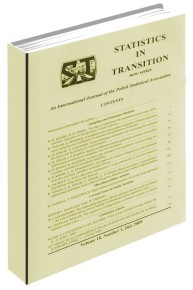THE WELLBEING EFFECT OF COMMUNITY DEVELOPMENT. SOME MEASUREMENT AND MODELING ISSUES
THE WELLBEING EFFECT OF COMMUNITY DEVELOPMENT. SOME MEASUREMENT AND MODELING ISSUES
Author(s): Włodzimierz Okrasa, Dominik RozkrutSubject(s): Economy, National Economy, Public Finances
Published by: Główny Urząd Statystyczny
Summary/Abstract: The two interconnected methodological tasks – measurement and modeling – become especially challenging in the context of exploration of the interaction between the local community development and individual wellbeing. In this paper, the preliminary results illustrate usefulness of an analytical framework aimed to assess an impact of the local development on individual wellbeing through multilevel modeling, accounting for spatial effects is. To this aim, a dual measurement system is employed with data from two independent sources: (i) the Local Data Bank (LDB) for calculating a multidimensional index of local deprivation (MILD), and to capture variations in geographically embedded administrative units, communes (the country's finest division), and (ii) the Time Use Survey data to construct the U-index ('unpleasant'), considered as a measure of individual wellbeing. Since one of the implications of the main hypothesis on the interaction between community development and individual wellbeing was the importance of 'place' and 'space' (effect of neighborhood and proximity), a special emphasize has been put on spatial effects, i.e. geographic clusters and spatial associations (autocorrelation, dependence The evidence that place and space matter for this relationship provides support for validity of both multilevel and spatial approaches (ideally, combined) to this type of problems.
Journal: Statistics in Transition. New Series
- Issue Year: 19/2018
- Issue No: 2
- Page Range: 359-376
- Page Count: 18
- Language: English

